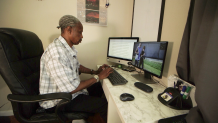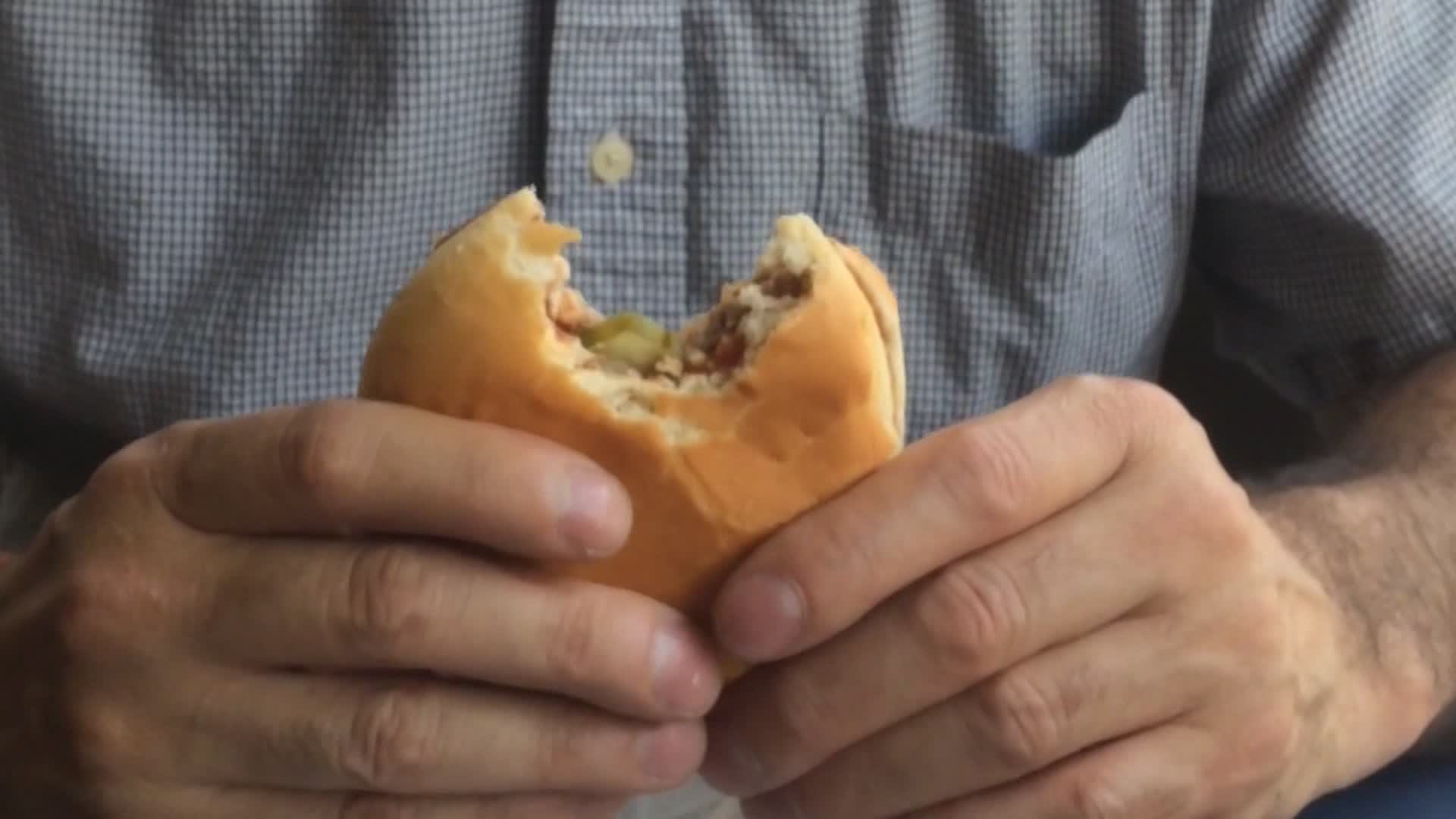Richard "Bonaru" Richardson stood in the front yard of an Oakland house, pondering the row of bars that wrapped around the property -- knowing that for the first time in more than two decades he could step beyond these bars anytime he wanted.
Just a few weeks before, Richardson was ensconced in the bars and razor wire of San Quentin prison, his home of many years -- shaking off the remains of an armed robbery he committed more than 23 years ago. But though his body was trapped in prison, his words and vision had reached thousands of people -- as a reporter and then editor of the San Quentin News, the prison's inmate-run newspaper.
"It was rewarding because I knew we was making a change," Richardson said, his eyes darting everywhere as if to inhale the outside world.
The San Quentin News dated back to the 1930s, was shut down more than a couple decades back, and then revived again in 2008 under Warden Robert Ayers Jr. In 2010 after bouncing around California's prison system, Richardson landed in San Quentin and took a job working on the newspaper's printing presses. When the presses were eventually shut down and the printing farmed to the outside world, Richardson talked his way into a job as a reporter. Even in prison where life is sliced into daily regimens, the demands of the gig suited him.
Get Southern California news, weather forecasts and entertainment stories to your inbox. Sign up for NBC LA newsletters.
"I like tasks, I like deadlines, I like benchmarks," he said. "To beat that deadline, it’s rewarding -- it’s fulfilling."
The role of the San Quentin News, its writing staff aided by professional reporters and educators -- checks a plethora of boxes; it's a mouthpiece for the prison and the inmates themselves; it's a training ground for inmates looking to develop new skills -- and most meaningful to Richardson, there's an advocacy aspect where the paper highlights programs and accomplishments of the inmates. In other words, it's aimed at lifting them up.

"We’re incarcerated individuals and we’re trying to change other incarcerated individuals," Richardson said. "Hopefully by these people telling these stories, we can keep other people from making those terrible decisions in their life."
California
News from across California
Richardson worked his way up to become the newspaper's executive editor -- helping to guide the larger vision of the paper, which is shipped to all 35 California prisons.
He recalled the days when the paper first re-emerged from the mothballs to begin printing again. Inmates would call it a "snitch paper" telling Richardson to "get his junk out of here" as he went cell to cell handing out the latest edition. But as the presses kept printing, and the writers kept writing - the inmates began to look for the next issue.
"Watching that transformation go from 'we don’t want this newspaper,' to 'when are we going to get the San Quentin newspaper?'" he remembered, "was humbling."
The paper became popular among the inmates, but also a tool for the incarcerated to apprise the outside public and policy makers of conditions within the prison.
Before he was paroled in May, Richardson not only put his stamp on the paper, but on the inmates he shaped into reporters under his tutelage, among them Jesse Vasquez who followed Richardson's path from reporter to serving as the newspaper's editor-in-chief.
"I think for some of us he was a mentor, he became like a brother to me," Vasquez said. "Taught me everything I knew about the paper."
Vasquez paroled out of San Quentin in 2019, crediting Richardson and the newspaper's inspirational ethos with helping him aim for a life outside prison.
"After I saw it, I wanted something better for me," Vasquez said, "because I saw something better."
But the last year of Richardson's stretch as editor and inmate was the hardest of his 23 years behind bars -- as COVID-19 found its way into the prison leaving a swath of illness and death.
Twenty-eight inmates and a prison guard died of the disease. Richardson was forced to temporarily shut down the newspaper to protect its inmate staff and outside volunteers from the virus, even as he himself contracted it and fell ill. But when he recovered and the paper started again, it unleashed an unflinching examination of the state prison system's response to the virus, utilizing reporting from both inside and outside the prison.
"Out of the whole twenty-three years I was in prison that was the scariest moment of my life," Richardson said. "Because every five to ten seconds in north block you had someone yelling man down."
And yet despite the newspaper's critical reporting on the state's handling of the virus , Richardson said he never got a call from the administration telling him to stand down.
"We never had a problem printing a story that the administration didn’t agree with," he said.
As the virus faded and Richardson's time in prison began to wind down, he did his own reckoning with the decisions that landed him there as a much younger man. As he talked about the emotions of having his freedom "taken" from him -- he quickly corrected himself.
"I know I committed the crime, I know I did this to myself," he clarified. "It wasn’t necessarily taken, I gave my freedom away."
Now, freshly out of prison and living in transitional housing in Oakland, Richardson was adjusting to the fact that his time was his own. The deadlines were his own. The future was his to plot.
It seemed an appropriate metaphor that Richardson hung a blank, white dry-erase board above the computer in his bedroom, on which he soon planned to begin listing tasks. Like Richardson's life, the board seemed a blank slate ready to fill with ideas and dreams.
"So I get to now write my own story," Richardson said glancing at the empty board, "instead of somebody writing my story for me."



